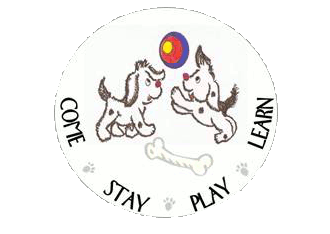Emotions...Dogs have them too!
- Joyce Keeton

- Apr 7, 2022
- 4 min read
Remember in the old days of training, Ethologists thought all animals were dumb and had no feelings or emotions? Yes, there was a time when that was believed. In fact, it wasn't too long ago. When I was studying for my Certification...about 20-some years ago...I had an impossible time finding books, journals, articles, or anything on dog emotions. In fact, I don't even remember dog emotions being mentioned in any of my classes, my reading material, or mentoring.
Fast forward to today and emotions are the big "new" dog behavior subject. Of course, those of us who have lived with dogs already knew dogs had emotions so it's awesome to see science catch up. One of the first studies I heard of was the Emory University study where dogs were taught (see, I didn't use the word train there?) to willingly go into an MRI machine and rest their head on a stand while an MRI was taken of their brain under various conditions. (Check out Gregory Berns' book, What It's Like to Be a Dog for the complete study). One of the tests was seeing what happened in the brain when a hot dog or praise was introduced to the dog while in the MRI machine. They wanted to see what areas of the brain had increased/decreased activity. What they saw was truly remarkable only in that it proved what people who live with dogs already knew...dogs love humans...at least as much as hot dogs! Yup, same areas that light up for humans experiencing love lit up for the dogs. This one test...and there are many more...completely changed how I worked teaching dogs and their humans going forward.
I was already sold on positive reinforcement and game-based training. In fact, I had already incorporated considering emotions into my training programs based on a group class I had many years ago. I saw one of the students almost forcing treats into their dog's face and the dog was backing up, turning his head and acting very frustrated. I stopped the student and explained that even though they were using treats, the dog did not see this as positive reinforcement because the treats and how the treats were being given was causing him frustration. It was a true lightbulb moment for me, and I carried that forward into all of my ongoing teaching.
I have now changed all of my teaching and the teaching my Trainers do at The Dog Spot Training & Enrichment Center to focus primarily on emotions with the understanding that behaviors are symptoms of those emotions. For so long we have focused on teaching dogs to do our bidding. Some people even want their dog's behavior to be so perfect that the dog rarely gets to make any choices and is constantly in a state of being on hold or in emotional shut down mode. Why is it important for a dog to perform behaviors perfectly in order to be considered a "good dog"? Is it life critical that your dog sit on a dime, down immediately, go to a place, lay down and stay until released, heel in perfect step with you, and come running faster than lightning when called? How about if your dog is happy, balanced, calm, and they choose behaviors that they enjoy and want to do because they feel confident and safe? Since changing to my Lifestyle Training program way of teaching, I have seen dogs happily sit, lay down, go to their place, come with gusto, and walk nicely with their human. Not because they are being commanded to do so but because they find these behaviors fun to do, and they are calm and confident enough to do so. By focusing on the dog's emotions and playing games around real-life scenarios and rewarding when the dog is happy and calm, "good" behaviors just kind of happen. This doesn't mean there isn't work involved but the work is different. Instead of doing repetition after repetition of sit, down, stay, go to place, wait, and heel, learning is happening every moment, in real life. I have seen dogs go from jumping on anyone they see, bolting out doorways, counter surfing, and having major anxiety to choosing to sit, lay down, happily watch their person and check in on walks by just focusing on their emotions. Very cool!!!
Take some time to observe your dog and ask yourself...what is my dog feeling right now? Why is my dog performing this behavior at this time? Try not to label your dog as anything, just identify the emotion. Anxious? Frustrated? Excited? Nervous? Happy? Scared? Once you identify the emotion, then you can decide how to address it so the behavior changes. Of course, we want happy but sometimes we label something as happy when frustration or anxiety also exist. Emotions do not exist in a bubble. Many times, there are many emotions going on at the same time and sometimes they conflict. If you are struggling with identifying how your dog is feeling around behaviors you would like to change, give us a call. Lifestyle Training is emotional based teaching, and it gives dog's choices to win and gain confidence. The bonus is you get a calmer and more relaxed dog who makes behavior choices that make you happy as well.
Joyce Keeton, CBC FFCP (Trainer)
Certified Canine Behavior Counselor
Fear Free Certified Trainer
678-475-7100 (Office)
678-628-3886 (Cell)





Comments